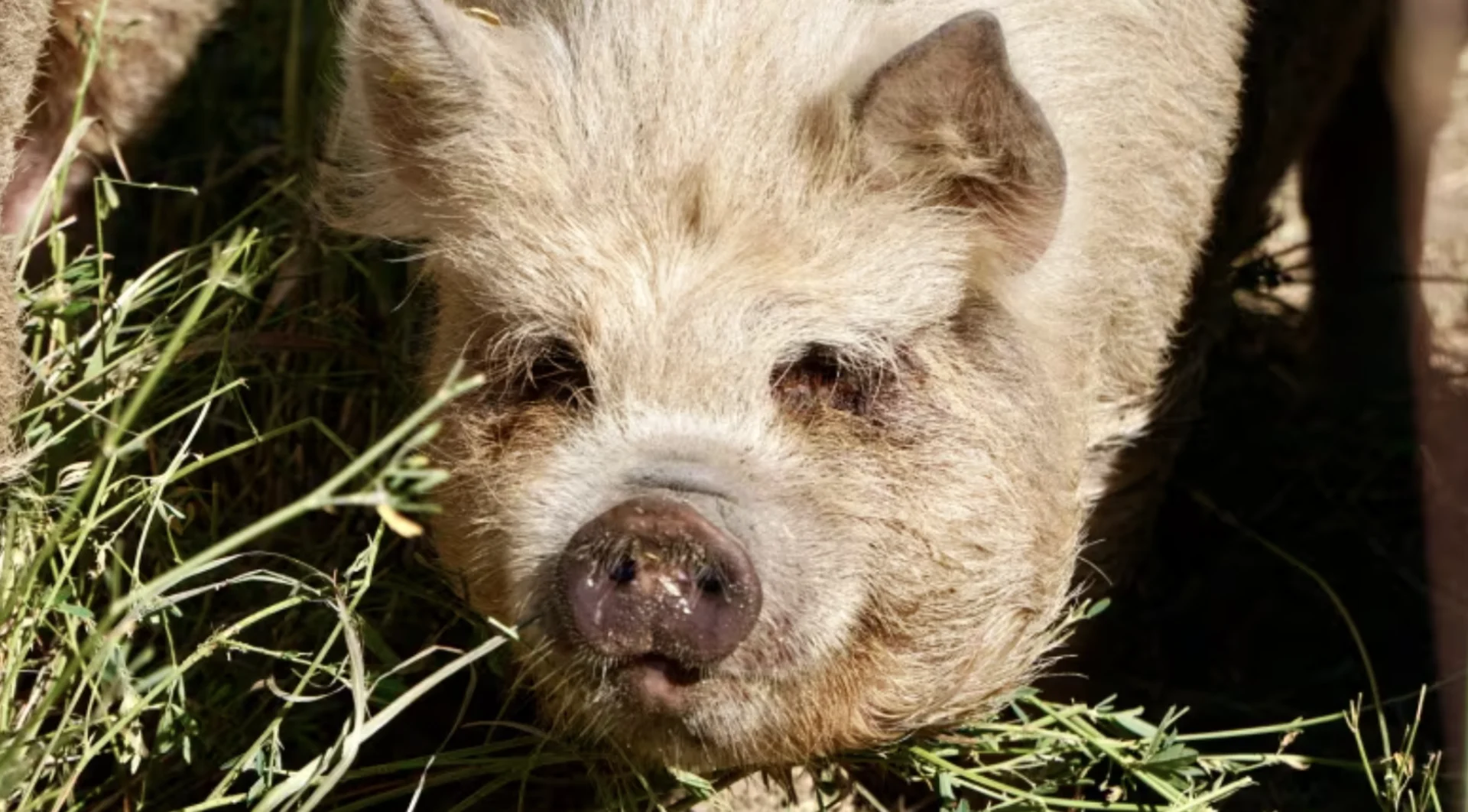
Booming solar industry has a growing appetite for weed-chomping crews
Under a blistering sun, Janna Grier hops out of her pickup truck to start moving hoses to fill up water troughs for her flock of sheep. One thousand of the shaggy, four-legged animals are spending their third summer at a solar farm about 40 kilometres east of Calgary.
Their job is simple: Eat weeds.
Grier and her crew are tasked with managing the land and ensuring none of the vegetation grows tall enough to block the sun from shining down on the nearly 110,000 solar panels on 130 hectares of prairie.
"A lot of people look at weeds and they don't want them around and we see them as a food source, right? Most of them are really high in protein. The sheep enjoy consuming them," said Grier, who began farming 15 years ago.
This summer, the flock has a few new friends with short snouts to lend a helping hand (or mouth). Grier is testing out eight female kunekune pigs, a breed originally from New Zealand.

SEE ALSO: Toronto to use 'eco-herd' to tackle invasive species
On this day, Grier moves the pigs to a new area to graze. "Come on ladies," she calls, as they plod along behind her.
"In the next five to 10 years, we're going to see tons of solar development and so there's huge potential for it," said Grier, as she puts up a new temporary fence for the animals.
The growing number of large-scale solar fields has created an increased need for animals to help control the weeds and other vegetation. Using the same piece of land for both solar and agriculture is known as "agrivoltaics." The concept is not new, but is growing in popularity, especially with new government rules on the horizon.

A small group of pigs are the newest members of the grazing team. (Kyle Bakx/CBC)
Sheep are the most common form of agrivoltaics because they reduce the need for herbicides and lawn mowing, which can kick up stones and break panels.
Research is underway to explore what other types of animals could be used on solar sites. Another area of focus by researchers is what types of crops could grow between and underneath the long rows of solar panels.
The proliferation of solar fields in rural areas has created some conflict as the renewable energy projects can change the landscape that was traditionally agricultural. The use of agrivoltaics though, can help mend fences.

At solar farms, vegetation has to be kept short, or it can become a fire hazard. Sheep and other animals can do a better job supporting the biodiversity than a conventional mower. (Rebecca Kelly/CBC)
"We start thinking about agriculture at our solar projects on day one," said Janet Annesley, chief sustainability officer with Kiwetinohk Energy, a Calgary-based energy company proposing to build three solar farms in Alberta.
The company's proposed 400-megawatt Homestead project would be the second largest solar field in the country.
"Many of our landowners would like to see some continuation of agricultural activities on their land," said Annesley. "They want to know how the soil is going to be protected and potentially enhanced over the life of the project."
The company is still deciding whether to have animals on its solar sites or to grow crops. In the meantime, Kiwetinohk is partnering with InnoTech Alberta, a provincial government research organization, on a pilot project in southern Alberta to test how different types of plants grow underneath solar panels, while monitoring the amount of moisture and shade.
Buying tractors and farm equipment is unusual for an energy company, but Annesley says several of its employees grew up on farms on the Prairies.
"We actually didn't have to look very far to find people with dirt under their fingernails," she said. "We're really interested in creating another revenue stream [in addition to solar]."
Landowner concerns were one reason why the Alberta government introduced a moratorium on new large-scale renewable energy projects last year.
The moratorium has since been lifted, although new rules continue to be developed to restrict how, when and where such projects can be built. One of the proposed rules would require agrivoltaics on solar sites located on the most fertile Class 1 and 2 agricultural lands in the province to help ensure some of the best farmland will continue to be farmed in some capacity.
Agrivoltaics is in its infancy in Canada, but a plethora of research is underway to discover the best techniques in different parts of the country.
The University of Calgary is pursuing the development of a research park to explore how beef producers can use their land for both cattle production and solar energy generation.
The University of Alberta has researched growing spinach under different types of solar panels, while Western University has grown strawberries and a variety of other plants and traditional crops.

Agrivoltaic research is conducted at a field station located approximately 14 kilometres north of the main Western University campus in London, Ont. (Supplied by Western University)
While solar companies are adding agriculture to their operations, there is potential for farmers to add solar panels to their existing operations.
"Farmers in general are fairly conservative. The last thing they want to do is mess up their crop and they've been very resistant to the idea of putting solar on their farms," said Joshua Pearce, a professor and researcher in the department of electrical and computer engineering at Western University.
"But as study after study comes out… we're seeing increases in yield," he said.
Installing rows of solar panels puts obstacles in the path of tractors and machinery and requires more effort for farmers, but Pearce says the economic yield per acre can be higher with solar.
The reason is because some crops grow better with a bit more shade, while the panels can also help block the wind and increase soil moisture.
"The U.S., Europe, and Asia have been aggressively adopting large-scale crop-based agrivoltaics. Canada is now really just at the experimentation phase," he said.

Some clean energy companies are turning to flocks of sheep and pigs to keep overgrown weeds from putting solar panels in the shade. (Kyle Bakx/CBC)
Grier, the sheep farmer, is excited about the many opportunities to grow her business as more solar fields are built in Alberta and neighbouring Saskatchewan. The amount of solar electricity produced in the country grew by more than ten per cent in 2023.
"It's not solar development versus ag[riculture]. It's coming together to the table to say, how can we both be a benefit and work together?" she said. "The sky is the limit when it comes to agrivoltaics."
As for her experiment with pigs, they adapted well to spending the summer at the solar field. Grier now plans to have four times as many of the animals helping to control the weeds at the solar site next year.
RELATED VIDEO: Cities deploy goats to tackle invasive plant species
This article, written by Kyle Bakx, was originally published for CBC News.










